Menu
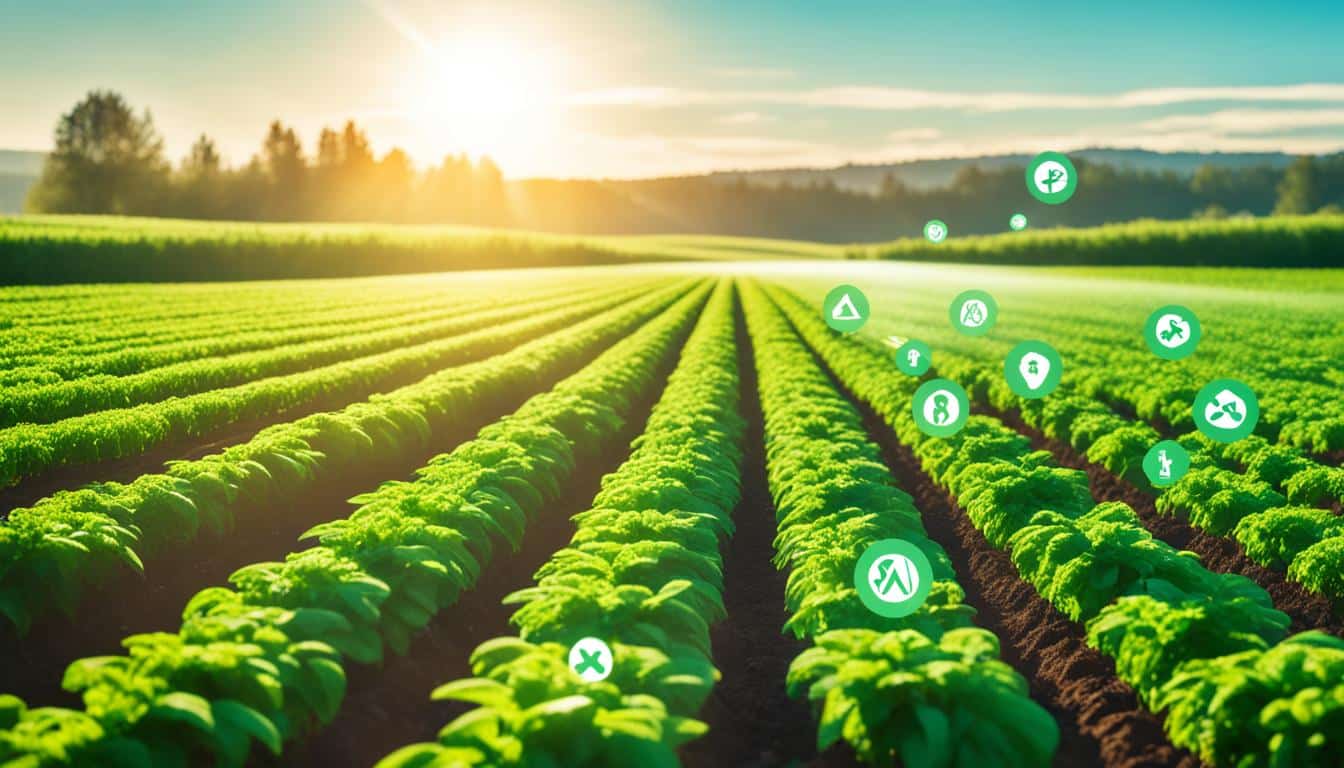
AI-powered greenhouses now predict crop yields better than ever. They look at huge amounts of data on the environment, soil, and weather. This change from manual to AI methods has greatly improved how we map soil.
Mogens H. Greve, a Professor at Aarhus University, highlights AI’s key role in monitoring soil health. With programs like the Copernicus, we make huge, detailed soil maps. These maps show soil properties over large areas very accurately.
The AI4SoilHealth project leads these improvements. It aims to make a single, top-notch system for soil checks across Europe. This work also brings communities and policymakers together. It supports the idea that protecting soil health is really important.
Working together across countries is crucial for good soil health checks. We expect more and better data by 2029. These steps help farming become more long-term and take better care of the soil.
The world’s population is set to hit 10 billion by 2050. This makes AI in agriculture more important than ever. The AI market for farming will grow from USD 1.7 billion in 2023 to USD 4.7 billion by 2028. It’s changing how we farm by improving our soil and helping us fight diseases in crops.
AI is changing how we take care of our soil. It allows us to look at soil in new ways, making maps better. One project called AI4SoilHealth is setting new goals for healthy soil. This means we can make better choices for farming.
In Denmark, AI is used to make detailed soil maps. These maps help decide how to use fertilisers. This makes farming kinder to our planet. It shows how AI can make farming better for everyone.
AI is making big changes in farming by helping crops grow better. It checks on crops in real time and suggests the best actions. Drones with AI even help use pesticides right, so they’re not wasted. This makes farming smarter and more efficient.
AI also helps farm machines know how to care for crops automatically. This means better crops and more profits for farmers. With AI, we can watch our crops, soil, and weather closely. It leads to more and better crops.
| Aspects | AI Applications |
|---|---|
| Soil Health Monitoring | AI-driven techniques enable comprehensive soil property analysis, developing new soil health indicators. |
| Crop Yield Optimisation | Real-time monitoring and precise interventions lead to higher crop yields through efficient resource allocation. |
| Reduced Pesticide Use | AI-powered drones determine the exact amount of pesticide needed, reducing overall usage and waste. |
| Autonomous Crop Management | AI algorithms support optimal irrigation and sustainable farming practices. |
| Policy Impact | AI-influenced soil maps guide environmentally friendly policies, such as nitrogen fertiliser usage regulations. |
Introducing AI to farming has many benefits. It helps our soil stay healthy and our crops grow well. AI’s journey in farming is just beginning, promising a future with more sustainable, durable, and productive farms.
Digital agriculture is changing how farms work today. With the help of artificial intelligence and the Internet of Things, farming becomes smarter. These technologies allow for quick and smart decisions.
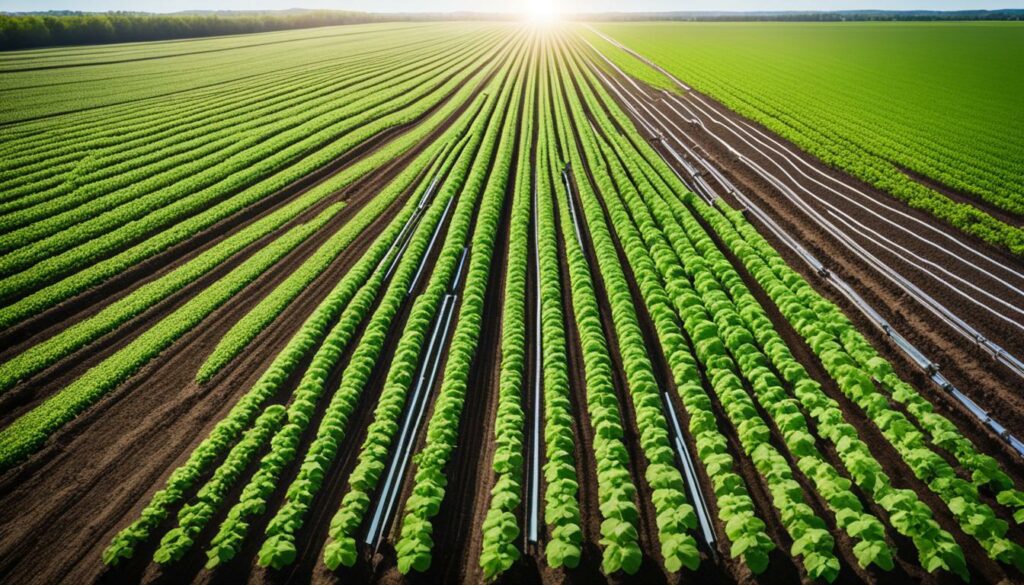
AI is at the heart of farming in the digital age. It helps monitor soil conditions and apply farming methods precisely. By using AI tools like self-driving tractors and intelligent irrigation, farmers see better results and protect the environment.
Yet, handling data from various sources is not easy. Making sure this data is accurate is a big challenge. We need to set standards for collecting and analysing data to make it trustworthy for everyone.
Evolving agriculture with AI and IoT brings many benefits. These include quick data processing for better decisions and automating tasks like harvesting. This way, farms can tackle worker shortages and improve how they run.
In the near future, agriculture will face tougher times. With a growing global population and challenges like less land and poor soil quality, we need new solutions. Maize, a key crop, could be hit hard by these issues, with its production set to fall.
| Aspect | Benefits | Challenges |
|---|---|---|
| AI Integration |
|
|
| IoT and Sensing Tech |
|
|
Precision agriculture is changing how we farm. It’s moving us from old ways to new, data-driven ones. This method uses tech to make farming more efficient and better for the planet. It’s a big step forward from how we used to farm.
Precision agriculture looks closely at each field’s differences in crops. It uses things like AI, VRA, and RST to check soil, watch for plant sickness, and guess the weather. Then, it makes sure farmers do the right things with their crops and save resources.
There’s a lot precision farming can do to help farmers. For example, sensors in the soil can tell farmers what the plants need. This helps use less water and fertiliser. Drones and sensors also help by only putting what the crops need right where they need it. This cuts waste and helps the environment.
Then there’s Precision Irrigation Systems (PIS). They give plants water only when they really need it. This saves water and helps crops grow better. Apps and tools can give farmers advice on how to take care of their crops really well. This makes farming smarter and more profitable.
| Aspect | Conventional Farming | Precision Agriculture |
|---|---|---|
| Resource Efficiency | Often low due to uniform application of inputs | High due to targeted interventions based on data |
| Environmental Impact | Significant, with issues like soil degradation and water pollution | Minimised through sustainable practices and reduced input usage |
| Yield | Variable and often suboptimal | Optimised through precise management techniques |
In the end, precision agriculture is making farming better in many ways. It tackles old farming problems and makes a more efficient, sustainable future. This new way of farming is all about using data and smart tech for the best results.
Machine learning algorithms have changed the game in soil monitoring. They provide detailed insights by crunching big soil data sets. These data include things like climate and terrain. By combining all this data, they can predict soil types across areas. This is key in using AI for farming smarter.
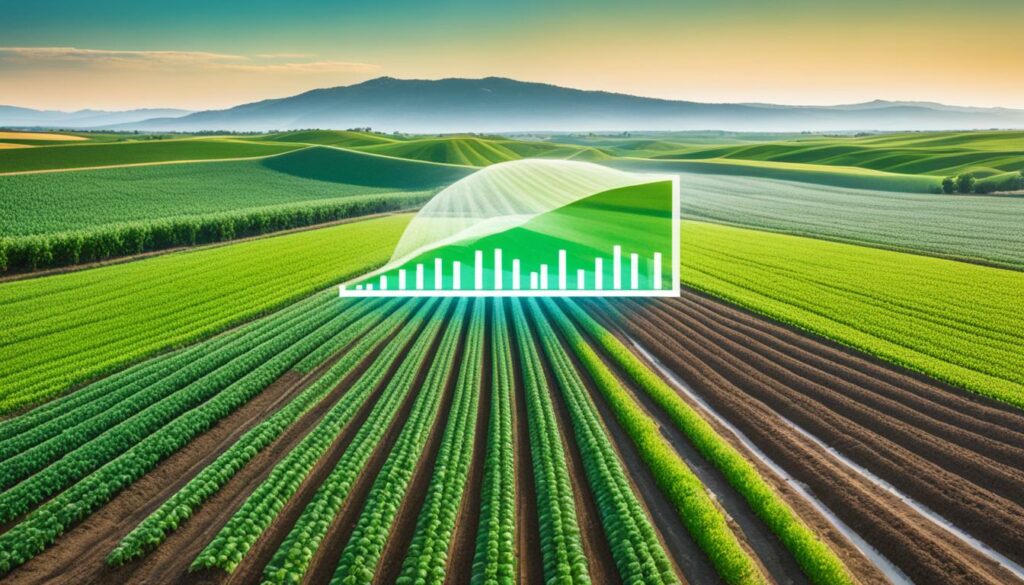
So how does machine learning help with soil? It takes in lots of soil data to spot trends and make clever guesses. For instance, it looks at soil-water content and how it affects plants. It considers things like soil type, pH, and temperature. This helps figure out the best environment for plant growth.
Using machine learning for soil health starts with collecting tons of data. This includes weather info and past farming methods. Artificial intelligence (AI) then analyses this data. It gives farmers tips on factors like how well soil can hold water.
AI makes sense of all sorts of farming data to suggest what to do. For example, it figures out soil health indicators and the best farming methods. It can show where predictions might not be certain.
Here’s a table on some factors affecting soil-water content and why they matter for farming:
| Parameter | Impact on Soil-Water Content (SWC) | Implications for Agriculture |
|---|---|---|
| Soil Texture | Affects water flow and storage | Critical for accurate soil-water management |
| pH | Influences microbial activity and nutrient availability | Essential for maintaining soil fertility |
| Temperature | Affects rate of mineralization | Significantly impacts crop growth and yield |
| Precipitation | Alters soil saturation and porosity | Key factor for irrigation scheduling and drought management |
Machine learning is making soil monitoring much more effective. It’s turning soil data into actionable advice for farmers. This tech helps in making farming and agriculture more sustainable. It also boosts crop growth.
AI has changed the way we look at soil data. For the last 15 to 20 years, soil mapping combined with AI has really changed the game. Now, we can move from just collecting a few data points through soil samples to creating big, predictive maps of soil across wide areas.
Machine learning has made soil mapping much better. Now we’re using drones with special sensors to get data in real-time. Also, thanks to programs like Copernicus, we can access more data to make our maps even better.
These new ways of collecting data make sure we measure important things like nitrogen and temperature really accurately. This makes farming more efficient because we can use the data to do a better job.
Using AI for data collection helps us study soil properties better. We can now send and study soil data well with the help of technologies like Wi-Fi modules and transceivers. This means we have a more detailed view of soil health, including things like carbon levels and the type of soil present.
By working on laws like the Soil Monitoring and Resilience law, the EU wants to make sure everyone is using good data. These laws are helping farmers in big ways, like telling them how much nitrogen fertilizer to use from detailed AI soil maps. This boosts crop production and saves money.
| Parameter | Measurement Tool |
|---|---|
| Nitrogen | Soil Sensors |
| Phosphorus | Soil Sensors |
| Potassium | Soil Sensors |
| Temperature | ESP32 Wi-Fi Modules |
| Moisture | NRF24L01+PA+LNA Transceivers |
The world’s population is set to hit 10 billion by 2050. This means we need smart ways to produce more food. AI in sustainable farming is one key. It helps protect the environment and makes better use of farming resources. This technology is changing how we take care of soil and manage crops.

AI is a big help in cutting down harm to the environment. For example, drones with AI spray pesticides exactly where needed. This stops chemicals from getting into water sources. AI is also great at spotting plant diseases early, like apple black rot. It means less need for harmful chemicals. AI checks soil health. This helps farmers use fertilisers just right, reducing waste and pollution.
AI really boosts how we use farming resources. Machines like driverless tractors and greenhouse robots lessen the need for manual work. They are efficient and smart. AI is good at controlling when and how much water crops get. It finds leaks and ensures water is used well.
It uses data to plan crops better, getting the most out of resources. Precision farming adjusts water, fertiliser, and pesticide use for higher crop yields. This way, we use resources better and keep more for the future.
The AI in agriculture market is growing fast, set to jump from USD 1.7 billion in 2023 to USD 4.7 billion by 2028. New technology like Pycno’s sensors and Source.ag’s analytics show the way. They help us do more with less, to farm in ways that are good for the earth. So, by using AI smartly in farming, we can hope for a better, more sustainable future.
Today, soil analysis tools are getting better, giving farmers more detail about their land. New tools include sensors and remote technologies. They help with precision farming by giving crucial data.
The ChrysaLabs Probe™ is a new sensor. It can quickly check over 35 soil characteristics live. These include nutrient levels, pH, organic material, and density. It analyses soil in just 30 seconds, helping farmers with quick decisions.
This sensor works well with common soil testing methods. It gives a full picture of soil health. Plus, it sends the data to the cloud immediately. Machine learning then analyses the data, giving precise and useful information.
“ChrysaLabs’ technology is changing agriculture. It provides real-time and accurate soil information for better decisions,” said experts.
Remote sensing uses platforms like Copernicus to go beyond what soil tools can do on their own. It uses special math to guess soil data where it hasn’t been tested. This makes the data more complete.
These tools help to watch over different soil parts from far away. They add to the usual ways of checking the soil. So, farmers can see the health of their land from a wider perspective.
The world’s population is set to hit 10 billion by 2050. This means farming must increase crop production. Predictive analytics helps by using data on the environment and soil to give farmers key insights.
In farming, predictive analytics means using smart technology to study a lot of farming data. This tech can predict how much a crop will yield and the health of the soil. It’s getting more popular, with the market expected to grow to USD 4.7 billion by 2028.
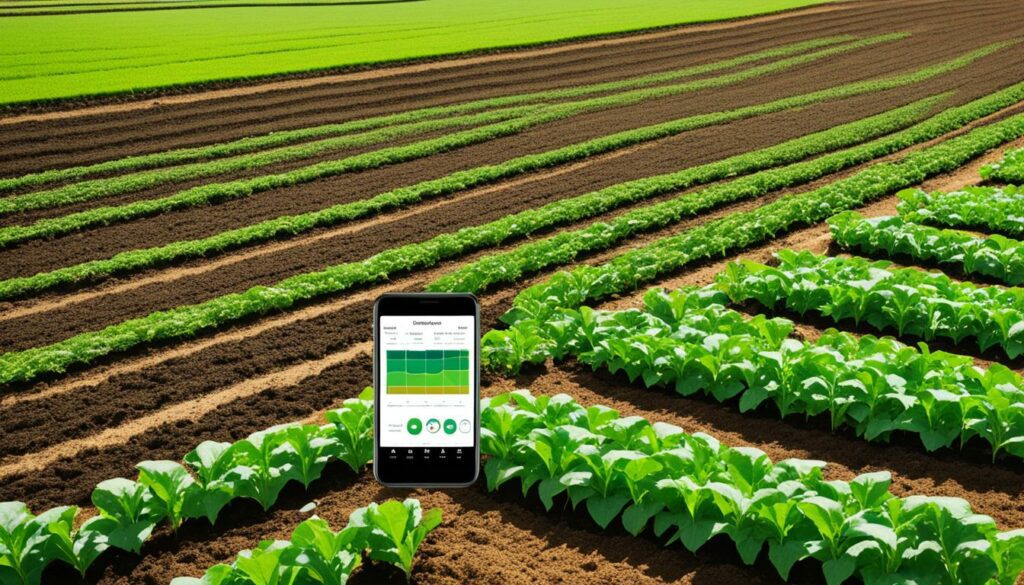
Predictive analytics is changing farming in big ways. It helps with things like knowing the best times to plant and harvest by looking at what people will want and how much they will pay.
It’s also about using smart machines and systems that save water or fight diseases. All these things make farming more efficient and help the planet too.
This smart approach isn’t just good for business. It uses resources better and helps farmers all over manage their land. In the end, it’s about making sure our food needs are met in the years to come.
By 2050, our world will have almost 10 billion people. So, smart farming is more and more important. It uses high-tech like AI and IoT to improve how we farm. This tech helps with many farming challenges today.
Smart farming, or intelligent agriculture, uses the latest tools. It makes farming more effective. AI helps to watch over the health of the soil and crops. This means problems like diseases in crops can be spotted early.
This way, farmers can take quick action to stop diseases spreading. For example, machine learning can help find these issues fast. It makes farming smarter.
AI is also used to manage water in farms. It makes sure water is used well. This saves water and helps the environment. But, not all farmers can start using this tech right away. It can be too expensive. This shows that more work is needed to help all farmers use high-tech.
Today, farmers can use many smart tools. These include sensors and ploughs that drive themselves. Drones and special software also help. They all work together to make farming better.
AI can even guess how many crops a farm will grow. This helps farmers plan. They can get the most out of their fields. CRISPR, combined with AI, might change how we make new plant types. This could bring major improvements.
Blockchain and AI together could lead to more open sharing of farm data. This could make farming better for everyone. It encourages good farming practices and new ideas. Together, these tools and methods are key to future farming success.
So, using these smart ways is important for farming’s future. They make farming more sustainable and productive. If you want to learn more about how AI is changing farming, read AI in Agriculture: Smart Farming Solutions.
The AI4SoilHealth project is a big step in AI soil health monitoring in Europe. It has 13.789.328 EUR in funding and runs from January 2023 to December 2026. The goal is to help with the fact that 60-70% of Europe’s soil is not healthy.
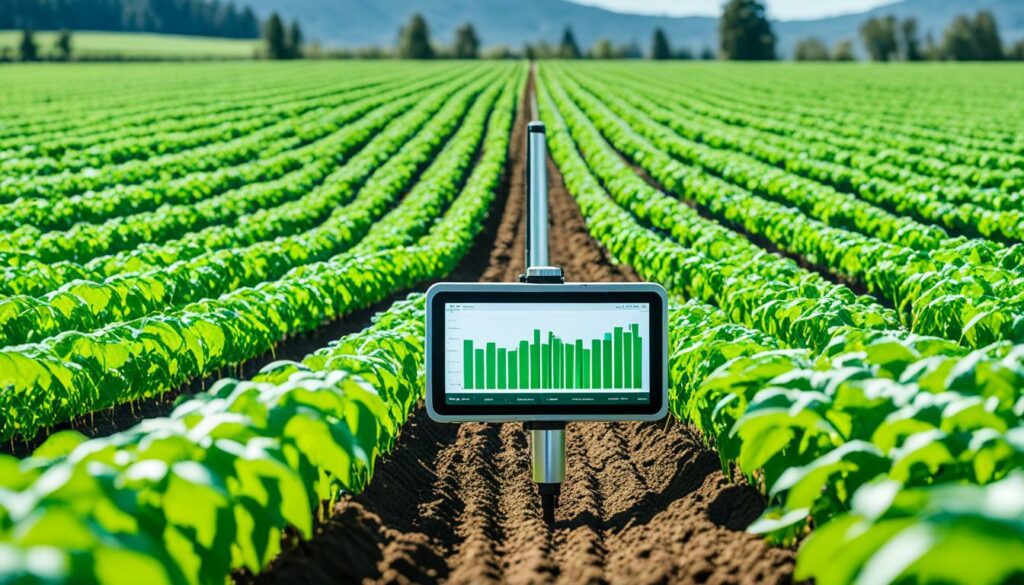
The main aim of this project is to make a big database of soil health info. This tool will help improve farming in Europe. It includes detailed maps and a special app.
The tool will give farmers data on CO2. By 2028, it will show if soil takes in or releases CO2. This is important for Europe’s goal to cut CO2 by 310 million tonnes by 2030.
Aarhus University in Denmark is in charge of the project. It works to measure and improve soil health. The project also involves many partners from 11 countries.
Partners like the Thünen Institute and Luke provide important data. This cooperation aims to create a strong system for monitoring soil health.
The project will greatly impact farming in Europe. For example, the Thünen Institute will look at soil health across Europe. It will share useful info with everyone.
Several universities will focus on better ways to measure soil health. They will help deal with different soil problems in various regions. Together, they aim for a more sustainable agriculture future.
The Max Planck Institute is also involved. It will use AI and modeling to study how soil keeps carbon. This will have a big effect on saving soil and farming better.
| Institution | Role |
|---|---|
| Aarhus University | Developing soil health index |
| Soil Association | Coordinating pilot sites, soil data provision |
| Thünen Institute | Trend analysis, public accessibility |
| Natural Resources Institute Finland (Luke) | Testing remote sensing technologies |
| Roma Tre University | Human-environment interactions, soil erosion dynamics |
Soil mapping is incredibly important for knowing about soil properties worldwide. New technologies like AI and machine learning systems make this process better and quicker.
Today, we use satellites, including NASA’s SMAP mission, to check soil moisture worldwide. These satellites provide data every few days from 5-10 kilometres above the Earth. High-resolution satellite images show more details at scales of 25-100 metres.
Small sensors and IoT devices can now measure moisture, salt, and nutrients in smaller areas like farms. Machines with cameras assess soil quickly and accurately. Advanced AI systems help sort through aerial soil pictures quickly.
This means big things for farming. By using detailed soil maps, farmers can do better farming. This includes using less fertiliser and keeping soil healthy. Through these technologies, farmers can improve their crops and take better care of the land.
Techniques like kriging make soil maps more detailed. Artificial intelligence makes soil data more reliable. This supports farming that’s good for the environment and productive.
Advanced soil mapping is changing agriculture for the better. It makes farming smarter and helps protect the planet.
Artificial Intelligence (AI) is changing farming by connecting it with nature through smart technology. With the help of AI, farmers get exact details on farming conditions. This leads to better farming practices that work well with the environment.
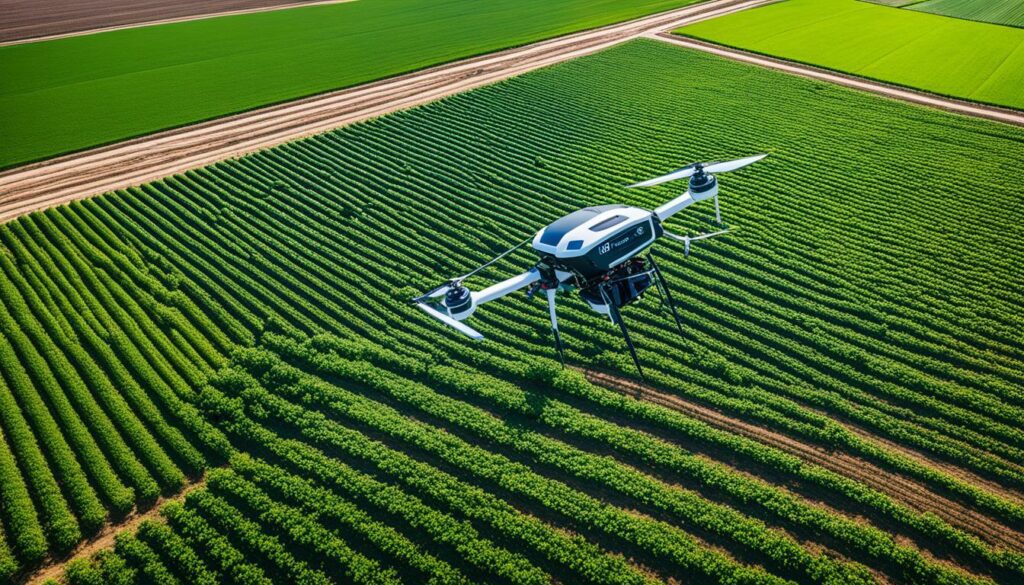
In agroecology, AI is crucial. It uses high-tech tools like soil sensors to collect precise data. This data helps in better farming, like managing water use and preventing soil damage.
AI also helps in checking soil health and forecast climate issues. With monitoring tools and satellites, farmers get quick information. This helps them take action early to keep their farms healthy.
AI brings many benefits to farmers. For example, it uses drones and satellites to gather lots of useful data. This information includes soil moisture, plant health, and pests. It allows farmers to wisely manage their resources, leading to more crops at lower costs.
Also, AI helps in predicting crop yields and spotting diseases. Continuous crop monitoring is also possible. These AI tools are key to reducing losses after harvesting, improving access to markets, and making farming more sustainable.
In agriculture, real-time monitoring and predictive algorithms are changing how fields are managed. They help optimise crops. The world’s population is expected to hit 10 billion by 2050. This puts huge pressure on agriculture to produce more. AI in farming provides crucial help, especially with monitoring soil instantly.
The use of IoT devices and sensors in agriculture is a game-changer. They collect data constantly. This includes info on soil moisture, temperature, and nutrients. For example, NASA’s SMAP mission updates us globally every few days. This data is so detailed, showing conditions at resolutions of 5-10 kilometres. AI helps by quickly spotting changes in crops, which humans might miss.
AI has a big role in managing soil health precisely. It uses lots of data, like satellite info, real-time data, and soil features. With this, it forecasts what will happen on the farm very accurately. This way, AI adjusts crop watering for the best use and less waste. It also guides drones to use pesticides carefully. This makes farming more efficient and kinder to the planet.
The use of AI in agriculture is set to increase a lot. The market is likely to jump from USD 1.7 billion in 2023 to USD 4.7 billion by 2028. AI can do amazing things, like tracking wheat growth phases and finding apple diseases very well. These AI tools are changing farming for the better. They increase production and move towards more sustainable farming.
AI has changed farming by making soil mapping more accurate and efficient. Predictive analytics and machine learning let farmers understand soil better. This means they make smarter choices, leading to better, sustainable farming.
Working with experts like Mogens H. Greve, efforts like AI4SoilHealth create detailed maps and new health indicators for soil. They use Copernicus Sentinel data to understand soil better over wide areas. These advances help with precise farming and protect the land.
AI monitors soil in real time and suggests actions that increase crop production. It uses soil data to adjust when to water, fertilise, and more. This directly helps crops, making them grow better.
Digital farming uses AI, IoT, and sensors for quick, smart decisions. These include soil sensors, drones, and advanced Wi-Fi devices. They help gather and study data for better farming actions.
Digital farming boosts productivity and sustainability by using precise data and managing resources better. Still, there are hurdles, like making sure data is correct everywhere and having the same ways to analyse it. Meeting these challenges needs teamwork.
Precision agriculture focuses on spotting and addressing differences in crops. It’s key for making the most of resources and being green. It allows smart watering and fertilising, using the latest tech.
Machine learning looks at lots of soil data to make predictive maps. These maps show soil properties clearly over big areas. This helps farmers choose what to do based on solid data.
AI uses drones and sensors to gather up-to-the-minute soil data. This tech measures things like nutrients, temperature, and moisture. It helps farmers know their land well, making farming more effective.
AI is essential for green farming. It provides accurate soil assessments and pointers on what to do. With the right data, it’s easier to use resources wisely, keeping the land healthy.
Soil analysis has advanced sensors and remote tech, like those from Copernicus. They give constant, detailed soil information and add to health checks. This makes understanding soil even more precise.
Predictive analytics, with the help of AI, predicts yields and soil health. It looks at lots of data to plan farm work smartly. Using these forecasts, farmers can be more efficient and productive, with less risk.
Smart farming uses the latest technologies to improve farming. It includes data analysis, sensors, self-operating machines, and tools for better decisions. This leads to less work, and better land and crop care.
AI4SoilHealth wants to gather important soil health data across Europe in a ‘data cube’. This data project helps farmers and policy makers make better choices. It boosts agriculture productivity and management throughout Europe.
With AI and machine learning, we now understand soil in great detail. This means we can use fertilisers and farming methods more precisely. It helps crops grow better while keeping the soil healthy.
AI improves farming so it works well with nature. It uses high-res maps and smart techniques. This leads to using resources in a clever way, helping the environment and farming.
For keeping an eye on the soil constantly, IoT and sensor devices work together. AI processes the data they collect. This tech watches over things like soil moisture and temperature, helping farmers act at the best time.